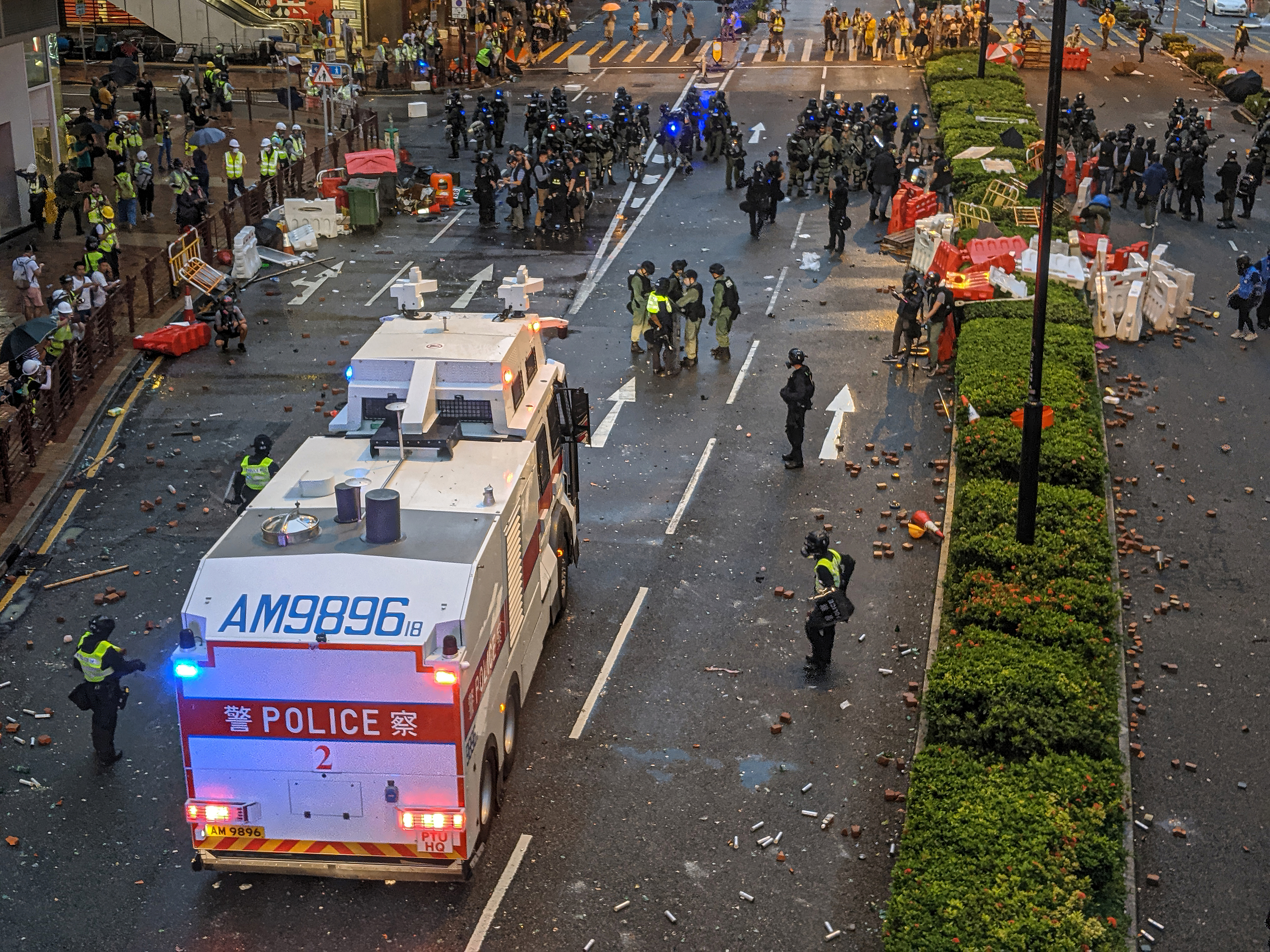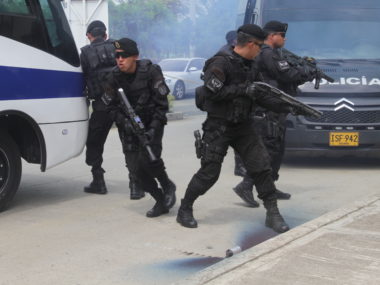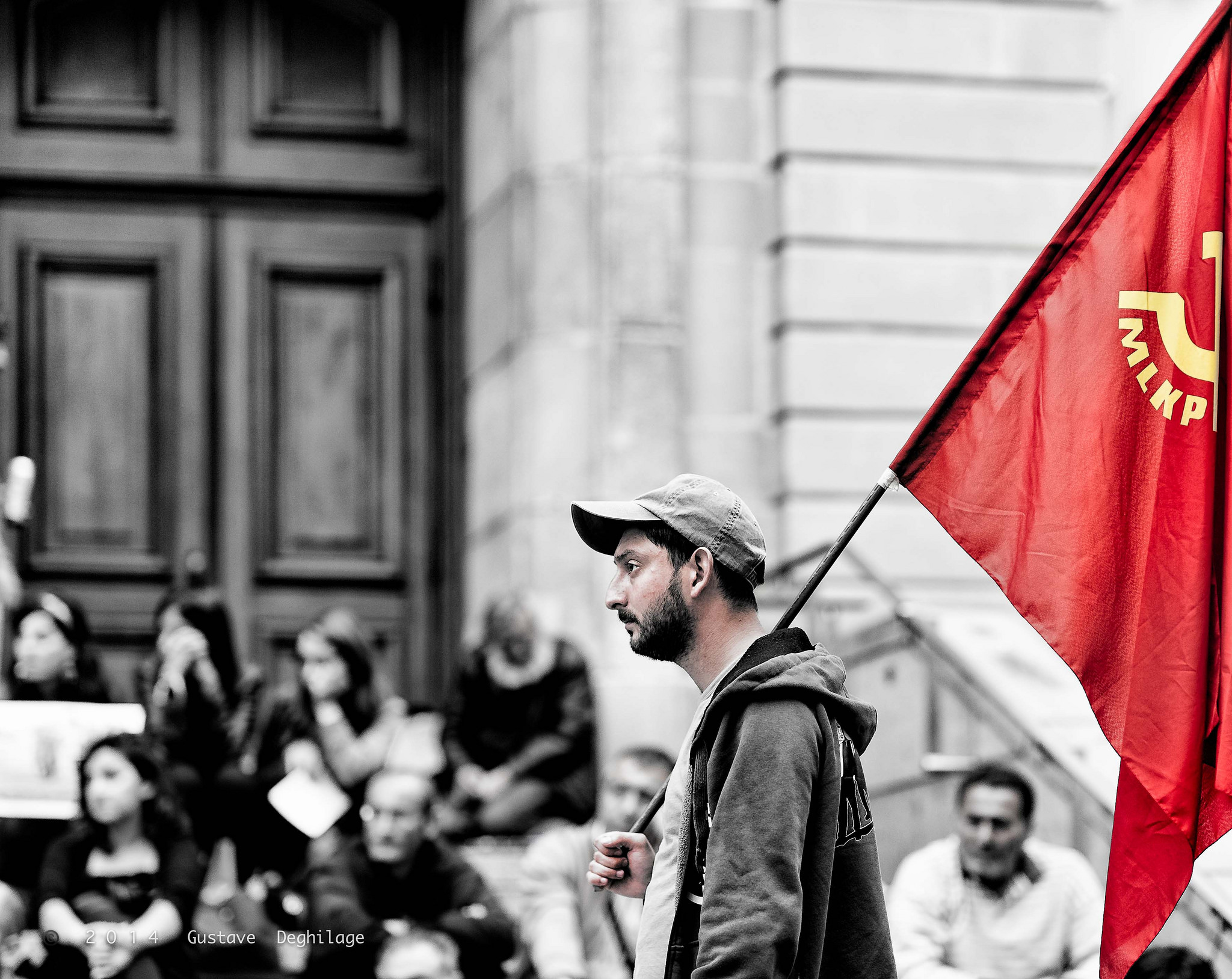Guest post by Graig R. Klein.
After months of boiling discontent, Hong Kong’s chief executive, Carrie Lam, extended a significant olive branch to the protest movement on September 4th by withdrawing the contentious extradition bill. The bill would have allowed the government to transfer alleged criminal offenders to mainland China and other countries—opponents feared this would undercut Hong Kong’s autonomy and freedom. While some found the accommodation to be “something of a surprise,” our research on protest concession, disruption costs, and government responses suggests accommodation was likely.
Constructing Concession Costs
Concession costs are synonymous to the political costs levied against the government. These costs directly threaten the ruling corps of the government because they must pay the costs to recoup peace on the streets. The extent of these costs is a function of protester demand(s), violence, and demand history.
Protesters’ demands range from low to high threat. Low threat demands include disputes over labor policy or social restrictions, which could be resolved with comparatively modest negotiations. Medium threat demands contest governments’ political behaviors, including legislative processes, police brutality, or arbitrary actions. High threat demands directly call for the resignation or removal of government officials.
No matter the stakes, when demands are recurring or accompanied by violence, they are more threatening and more costly to the government.
Constructing Disruption Costs
Disruption costs affect a more diffuse proportion of the population than the government because the economic loss and public disorder effects resulting from protest affect both the government and broader public life. The exact nature of these costs are defined by protest location, duration, and size. As either, or both, duration and size increase, or if the protest occurs in the capital instead of a small rural town, the likelihood that average civilians are affected increases.
By increasing disruption costs, protesters can create a two-pronged attack on the government—the protesters impose costs through direct dissent while also generating general dissatisfaction among civilians.
How Governments Respond
Using protest and response data from the Mass Mobilization Data Project, we found that in 10,133 protest events in 161 countries from 1990-2014, the government’s response(s) significantly changes depending on the nature of disruption and concession costs. The two costs can move independently or in tandem and the combination of costs is a clear and distinct predictor of government response in the face of protest movements
High concession costs are more likely to result in repression (beating, shooting, or killing protesters), whereas high disruption costs motivate accommodation. When protesters construct maximum concession costs, repression is the predicted response 29%of the time and accommodation is the predicted response 2.5% of the time. Alternatively, when concession costs are at the minimum, repression is predicted 2.5% of the time and accommodation is predicted 11% of the time.
On the other hand, accommodation is predicted 17% of the time when disruption costs are at the maximum compared to only 3% of the time when there are minimum disruption costs. Repression is the predicted response 10 percent of the time across variance in disruption costs.
If both costs are low, the government is predicted to disregard the protest 75% of the time and, when both are high, repression is predicted 34% of the time and accommodation 6%. These strategies are not mutually exclusive—in our data 13.5% of the protests motivated multiple responses. When both costs increase, multiple responses become more likely.
Hong Kong Protests
How does thinking about disruption and concession costs help us understand current dynamics in Hong Kong?
Protesters have induced moderate concession costs by maintaining five medium-threat demands. While demands for universal suffrage would undermine mainland China’s authority over the chief executive selection process, the five key demands do not specifically call for Lam’s resignation or removal.
Alternatively, protesters have worked to impose high disruption costs. With millions marching through the hub of Hong Kong and shutting down the airport, protesters created economic pressure on local, Chinese, and even international players, forcing the government to concede.
In environments like Hong Kong, with moderate concession costs and high disruption costs, protesters increase their chances of forcing accommodation by the government. In effect, once protesters repeatedly occupied and shutdown Hong Kong’s international airport, the high disruption costs—and resulting substantial economic loss—made accommodation much more likely.
Indeed, the government tried to quell dissent with crowd dispersal tactics and repression, but as protesters remained defiant and continued to impose high disruption costs, the government increasingly faced little way out besides accommodation or full-scale repression. Looking forward, one cannot be sure whether accommodation will hold—regardless, the protesters have shown that nonviolence is a powerful tool for spurring political change.
Graig Klein is an Assistant Professor in the Professional Security Studies Department at New Jersey City University. You can follow him on Twitter @GraigKlein.







